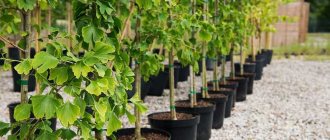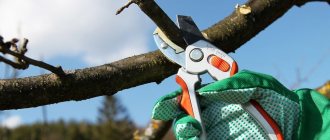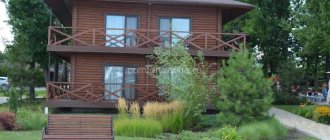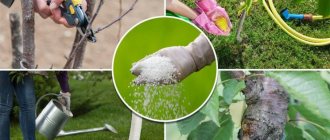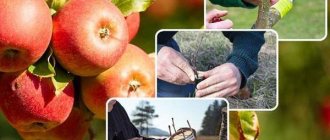In order for fruit trees to bear fruit consistently and abundantly, as well as to save space, increase productivity, and reduce the risk of the occurrence and spread of fungal infections, a huge number of types of crowns have been invented. You can give a tree one or another look: you need to correctly form the fruit plant. Often this process begins from the first days after planting a seedling on a site and ends only when the tree needs to be uprooted and replaced with a new one. Let's talk about the most common types of fruit tree formations, which are most often used in gardens and plots.
1. Sparse-tiered 2. Whorled-tiered 3. Tiered-less 4. Combined 5. Wind-shaped 6. Bush-shaped 7. Semi-flat 8. Flat 9. Advantages and disadvantages of each type
Photo: There are many types of crowns.
Today, the following types are common: sparse-tiered, whorled-tiered, tieless, combined, spindle-shaped, bush-shaped, semi-flat and flat crown, which includes palmettes and cordons familiar to every gardener.
Determining the crown of a tree
As you know, a tree consists of underground and aboveground parts. In other words, according to its structure, it is divided into three parts: the root system, the trunk and the crown. A trunk is a tree trunk that originates from the root collar and ends with the first branch.
It's time to figure out what a tree crown is and what types of it exist. Indeed, in nature there are a large number of plants that differ from each other in size and type of formation.
The crown is the collection of all the branches and leaves located at the top of the plant. It starts from the first branch, including all lateral branches and foliage, and ends at the top of the tree or shrub.
Pros and cons of each
Formation - sparse tier
Pros:
- It suits everyone and is as accessible as possible.
- You can limit the height of the plant. Applicable to actively growing and weakly growing rootstocks.
Minuses:
- You should be very careful in regulating the order of placement of branches, as well as the intervals between them.
- Not suitable for those types of plants that require maximum lighting.
Photo: Applicable to actively growing and weakly growing rootstocks.
Formation – whorled tier type
Pros:
- Can be formed quickly and easily.
Minuses:
- Since many first-order branches are formed, the development of the trunk may be inhibited. Since the location of the branches is adjacent, the skeleton itself may be fragile. This type of formation assumes the presence of weakly matured tissue at the sites of forks. Consequently, the winter hardiness of the tree is somewhat weakened.
Tierless crown
pros
- Very strong skeleton, excellent illumination.
Minuses
- The principles of subordination of branches both in length and thickness should be strictly observed.
- It takes a long time to form.
Photo: Tierless shaping will take a long time.
Combined type
Pros:
- You can combine different pruning techniques to achieve the perfect result.
cons .
Fusiform variant
Pros:
- You can form truly productive plantings.
Minuses:
- Serious labor costs and a qualified approach.
Bush
Pros:
- Suitable for any region, subject to modifications.
Minuses:
- Not suitable for low-growing varieties that are not characterized by increased branching.
- In the first seasons, pruning is difficult.
Photo: The bush type is suitable for all regions.
Semi-flat option
Pros:
- Very easy to shape.
- The result is early-bearing plantings, which is especially important for intensive gardens.
cons .
Flat – palmettes and cordons
pros:
- Early fruiting, especially in varieties that are not distinguished by their early entry into fruiting.
Minuses:
- This is a rather lengthy formation, it is very labor-intensive.
- Qualified trimmers needed.
We told you about the most common types of crowns. Of course, there are others, much less in demand. But they account for less than 1% of the total formations.
Photo: Unusual formation.
______________________________________________________________________________________________
Varieties of forms
According to the shape of the crown, they are divided into the following types:
- Oval.
- Globular.
- Spreading.
- Columnar.
- Crying.
- Conical.
- Umbrella.
- Creeping.
- Fusiform.
- Prostrate.
It is worth considering each of these types in more detail..
Oval and spherical
The rounded shapes are very different from each other in shape and can resemble ovals, balls, round pillows, etc. They attract attention because they look very unusual. They are used in the design of the front area of the courtyard composition. As a rule, they are dense balls of branches, giving the composition a mood of calm and tranquility. Round and oval volumes require a uniform location over the entire area of the site, otherwise the harmony of the landscape will be disrupted.
Spreading and columnar
Typical representatives of such forms can be found in orchards: apple, pear, cherry, etc. Many deciduous trees and shrubs have a form in which the branches are arranged in a random, chaotic order. This is their natural form, created by nature.
With their elongated shape, columnar crowns resemble columns, where a clear vertical can be traced. They look quite contrasting against the background of other trees. They have a clear geometric shape, which is why they usually become the center of the composition. They look harmonious on rocky terrain, as well as in small areas due to their compact location.
These include such types of garden trees as apple trees, pears, peaches, plums and cherries. Oak, birch, and maple can also have a similar shape. It is also characteristic of thuja and juniper.
Weeping and conical
People call weeping crowns green tents. Few trees have a similar crown shape. These include willow, maple and birch. When giving preference to these types of trees, it should be taken into account that they should form a composition with objects located in close proximity. For example, the most suitable place for willow is on the bank of a stream, river or lake, and for birch - next to a well or gazebo.
If the size of the plot is small , then it is better to pay attention to artificially grafted trunks of weeping crowns. It could be a climbing rose, pear, rowan, fuchsia or willow, which look organic in a small area.
The cone-shaped crown is a classic style. It is characterized by pyramidal outlines, gradually tapering towards the apex. It looks quite impressive in the landscape design of flower beds and single plantings. In park culture, the cone-shaped shape of trees is widely used to design paths, creating the effect of a green geometric fence.
cone-shaped crowns of coniferous trees , which include some types of thuja, look very interesting
Umbrella and creeping
In the literature, as a rule, the concept of an umbrella crown is used to designate larch in the form of an umbrella in young and old specimens. However, it is also called a hemispherical configuration.
Creeping crowns have become widespread in ornamental gardening as a decoration for alpine hills and lawns. In some northern regions, this form is used to promote fruit crops to the north. When forming a creeping form, it is necessary to remove the central conductor and pin the side branches to the ground. The shoots growing upward are also pinched.
Fusiform and prostrate
Spindle-shaped crowns refer to trees that are narrowed at the base, widen towards the middle, and narrow again towards the top.
The outstretched crowns of trees can be of different heights, but they have one characteristic feature: their branches are usually located in a horizontal plane. Visually, they resemble flat pillows located at the top of the trunk.
Tall plants with outstretched tops are grown as single specimens: they look very aesthetically pleasing and original on their own, without any additions. Low shrubs have found their use as decoration for rock gardens and low borders.
A wide variety of different crown shapes makes it possible to create landscape designs of extraordinary beauty. Moreover, their various types can be quite successfully combined with each other. However, the desire to combine all these species in one territory will not be successful, as it will create a certain imbalance in space. The optimal combination is 2-3 forms in one area, nothing more.
What you need to know to successfully master pruning techniques
Pruning trees and forming a crown is a serious matter, but if desired, everyone can understand the principles, understand the essence of the process and achieve compactness, large-fruitedness, and productivity from their apple trees.
Of all the activities carried out in the garden, perhaps the most difficult, especially for beginner gardeners. Pruning a fruit tree is nothing more than a surgical intervention in its Organism, and the slightest mistakes made in this case, especially in relation to newly planted young trees, are fraught with serious consequences.
The need for systematic and consistent formation of the crown of a young tree is justified by the fact that an adult tree, in our case an apple tree, must have sufficient strength of fusion of the branches of the crown with the central conductor, good lighting of all their sections, which contributes to the formation of fruits not only on the outside, but also on the inside crown zone.
In addition, in order to increase the density of plantings, improve the convenience of caring for the crown and harvesting the crop, it is necessary to choose a formation system such that even mature trees are of small height with a low-volume crown.
In practical gardening, various systems for forming fruit trees are common, but the most accessible and at the same time universal crown for amateur gardeners is a small-sized sparsely tiered crown.
Periderm - protective tissue
It is this that protects trees from environmental influences. What is the periderm? How is it formed? How does it perform its protective functions? How does the periderm differ between different breeds?
Branches and branches
Twigs are small branches that provide support for leaves, flowers and fruits. The branches support the branches, and the trunk supports the entire crown. Branches and branches develop from two types of buds:
- terminal or apical buds at the end of the shoot;
- lateral or axillary buds that form along the branch.
The apical bud is the strongest on a branch or branch and is located at the end of the shoot. It controls the development of secondary kidneys with the help of hormones. Usually secondary buds do not develop and remain dormant. As a rule, the apical bud is the most active on each branch or branch and controls the development of axillary buds on the same shoot, which are often dormant: their growth is restrained by the apical dominance of the terminal bud.
Formation of branches
Shoots with a dominant apical bud are monopodial or sympodial .
Shoots without apical dominance are false dichotomous .
The death of an apical bud as a result of accidental damage or pruning can lead to the activation of dormant buds near the cut and, as a result, to the development of a new shoot.
Some shoots develop adventitious buds that form along the trunks and roots. They usually occur in response to the loss of normal buds as a result of the action of growth regulators.
Annual increase: 1 – 1 year; 22 years old; 33 years
Leaves and buds are formed from a slightly thickened part of the branch called a node . An internode is the area between nodes. Leaf scars and apical bud scars are visible on the branch. They help measure annual branch elongation and overall growth. In its structure and function, each tree branch is comparable to the entire crown. But at the same time, branches are not just shoots of the trunk.
On the contrary, branches are characterized by a unique form of attachment to it, which is extremely important for practical tree care activities, such as pruning.
The branches are firmly attached to the wood and bark located below the branches, but above them the attachment is more fragile. The annual growth of tissue layers in the area where the branch and trunk meet is clearly visible and is formed most of the time. The shoulder or bulge around the base of a branch is called a collar . At the point of branching, the tissues of the branches and trunk expand to meet each other. As a result, the bark rises, forming the crest of the branch . If the bark in the branching area is surrounded by wood, it is called included bark . This further weakens the fork of the trunk, since the normal attachment of the branch to the trunk is not formed.
| See also: |


